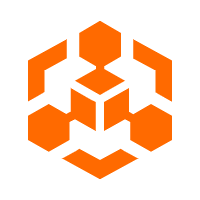Jon Radoff (https://medium.com/building-the-metaverse) has proposed a seven-layer model to describe the value chain of the Metaverse market.
The layers are:
The layer 1 corresponds to the experience. The Metaverse dematerializes physical space, objects and distance and proposes a 3D representation.
By lifting the restrictions of the rules of physics, users can live new experiences impossible today. This is one of the reasons for the success of immersive events. For example, in the Metaverse, all concert tickets are in the front row.
More users produce content, more the offered experience is important.
The layer 2 corresponds to the discovery of new experiences and social interactions. We distinguish between experiences :
Community-generated content is central because it stimulates community engagement.
Moreover, the sharing of experiences in real time is increasingly important.
The layer 3 corresponds to the Creator Economy.
Metavers generally provide design tools that allow the creation of content without having to know how to program. This increases the number of content creators. They also provide a marketplace to sell this content.
The layer 4 corresponds to spatial computing. It is this layer that allows the virtual to be mixed with the physical world.
It is the spatial computing that combines the use of Virtual Reality, Augmented Reality, the Cloud, sensors and spatial mapping to digitize the physical world.
The layer 5 corresponds to decentralization, which allows Metavers not to depend on a centralized authority. On the contrary, Metavers are open and distributed. The richness of Metavers will be increased tenfold with the interoperability of Metavers.
Through decentralization, creators are sovereign over their own data and creations.
Thanks to distributed computing and microservices, developers have less effort to provide for the backend of services.
The layer 6 corresponds to the human interface.
With the miniaturization of devices such as smartwatches, smart glasses, wearables, biosensors and neural interfaces between the brain and computers, we are becoming more and more like cyborgs.
Advances in the field of haptics allow us to transmit information through touch, even in the absence of objects. This allows us to control objects without having to touch them. It is even possible to make people feel the texture and shape of a virtual object.
The layer 7 corresponds to the infrastructure, to the technology. It is the layer that allows the development.
When we talk about infrastructure, we think of :
By Bruno Delb
The DevOps Canvas to collect and organize project information

8 posts | 1 followers
FollowAlibaba Cloud Community - February 9, 2024
Alibaba Cloud Community - December 20, 2021
Iain Ferguson - March 22, 2022
Alibaba Cloud Community - May 9, 2022
Alibaba Cloud Community - November 3, 2022
Rupal_Click2Cloud - September 4, 2024

8 posts | 1 followers
Follow LedgerDB
LedgerDB
A ledger database that provides powerful data audit capabilities.
Learn More Blockchain as a Service
Blockchain as a Service
BaaS provides an enterprise-level platform service based on leading blockchain technologies, which helps you build a trusted cloud infrastructure.
Learn MoreMore Posts by Bruno Delb